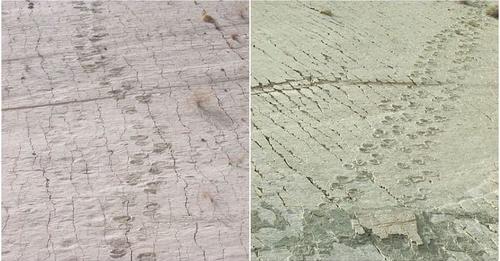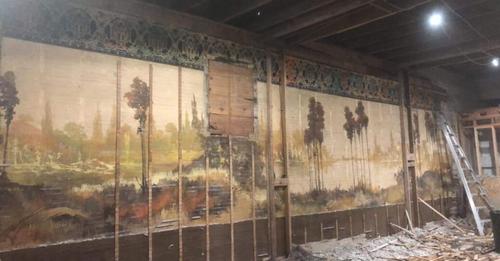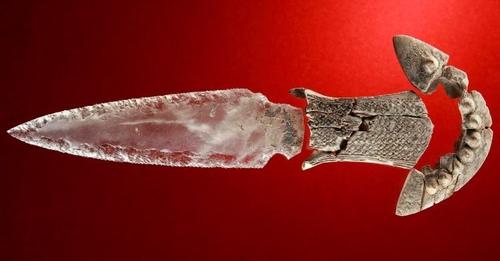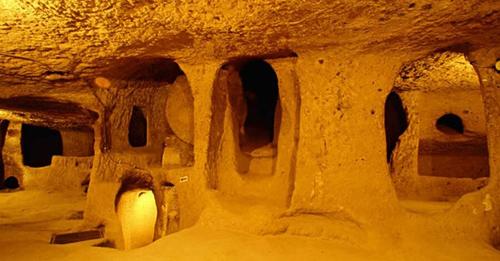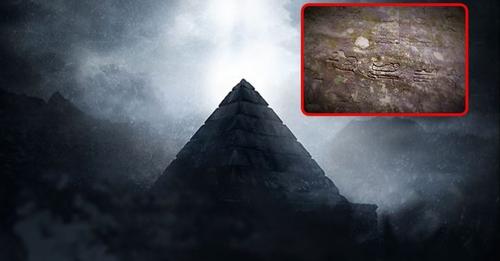Reconstruction Shows Teen Who Died in Norway 8,300 Years Ago
About 8,300 years ago, a teenage boy with an unusual skull and short stature may have scampered along the rocky coast of what is now Norway, pausing to regain his balance as he clutched a fishing rod. Now, a new full-body reconstruction of the Stone Age teenager — nicknamed Vistegutten, Norwegian for “the boy from Viste” — is on display at the Hå Gamle Prestegard museum in southern Norway.
The boy’s reconstruction was a months-long project, but researchers have known about Vistegutten since 1907, when archaeologists found his remains in a Mesolithic, or Middle Stone Age, cave in Randaberg, along Norway’s western coast.
A few things stand out about the 15-year-old boy: At 4 feet, 1 inch (1.25 meters) tall, he was short for his age, even by Mesolithic standards; a condition known as scaphocephaly meant that his skull had fused too early, forcing his head to grow backward instead of sideways; and he may have died alone, as his remains were found as if he had been leaning against a cave wall.
“Either he was placed like this after his death, or he actually died in this position,” Oscar Nilsson, a forensic artist based in Sweden who created the boy’s likeness, told Live Science in an email. “This can give the impression of a lonely boy, waiting in vain for his friends and family to show up … but we know nothing about how he died.”

Scaphocephaly occurs when the sagittal suture on the top of the skull fuses too early, giving the skull a ridged appearance. But “it is not associated with any developmental problems or intellectual disabilities,” Sean Dexter Denham, an osteologist at the Museum of Archaeology at the University of Stavanger in Norway who helped analyze the skeleton, told Live Science in an email. And while the boy’s unusual skull and short stature may have given him a unique appearance, his remains suggest he was well-fed and healthy.
“The sheer volume of animal remains found at the site also attests to a plentiful food supply,” Denham said. The cave, which is about 30 feet (9 m) deep and 16 feet (5 m) wide, is filled with kitchen waste; ornaments, such as decorated bone pendants; and fishing tools, including hooks, harpoons and barbed bone points, suggesting that ancient “people lived, worked, cooked and slept at the Viste site,” Nilsson said.
“The fishing hook that the reconstruction of the boy from Viste holds in his hand is a replica of one of these findings,” Nilsson noted.

To make the reconstruction, two computed tomography (CT) scans were taken of the skull, allowing Nilsson to create a 3D-printed plastic replica. Because he wasn’t sure about the boy’s facial tissue thickness, Nilsson relied on measurements of modern Northern European 15-year-old boys. “Of course, we don’t know how transferable these measurements are to someone who lived 8,000 years ago,” Nilsson said. “But it’s the best we can guess.”
He noticed that the forehead was “quite childish in appearance, rounded and projecting from the face a bit. This is most probably coming from the scaphocephaly,” Nilsson said, adding that the teenager also had a thin nasal ridge but a nose that was “rather broad at the lower parts.”

An analysis of the boy’s DNA showed that his skin tone, hair, and eye color “likely would be close to the other ‘Norwegian’ findings from the period,” including mostly brown eyes, dark hair, and intermediate skin tone, Nilsson added.
He intended to give the teenager a subtle smile, “but as I got deeper into the project, I could not get rid of a feeling of a lonely boy,” Nilsson said. “I imagine him on his way to the sea (which at his time was extremely near the cave) to catch some fish. It is very windy in this part of Norway, so I worked quite a lot to make it look as if the wind blows in his hair and clothes.”
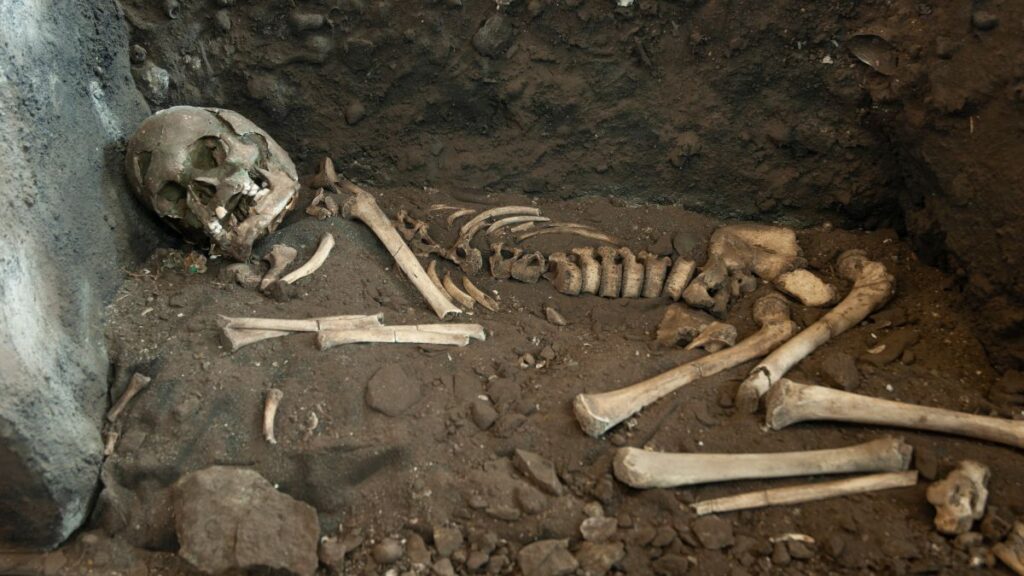
Stone Age wardrobe
The boy’s clothes are made by Helena Gjaerum, a Sweden-based independent archaeologist who uses prehistoric techniques for tanning leather. “Oscar wanted a summer outfit and that the boy would be barefoot, standing on the beach,” Gjaerum told Live Science in an email. “Therefore, a tunic was decided from the beginning.”
She made the tunic from de-haired and fat-tanned elk skin, and put two bark-tanned salmon skins around his waist. A bag that hangs off his belt was sewn from deerskin. All of these animals’ remains were found at the archaeological site. To add to the authenticity, “The suit is sewn with both sinew thread and leather straps,” Gjaerum explained. “It is smeared with ash and grease to look believable.”
The boy’s necklace was crafted from salmon vertebrae and a broken seashell. His remains are “one of the oldest skeletons ever found in Norway,” Kristine Orestad Sørgaard, an archaeologist at the Museum of Archaeology at the University of Stavanger who helped Nilsson understand the archaeological context, told Live Science in an email. “It’s a great reminder that people in the past were very much like us, despite living in a world very different from our own.”


